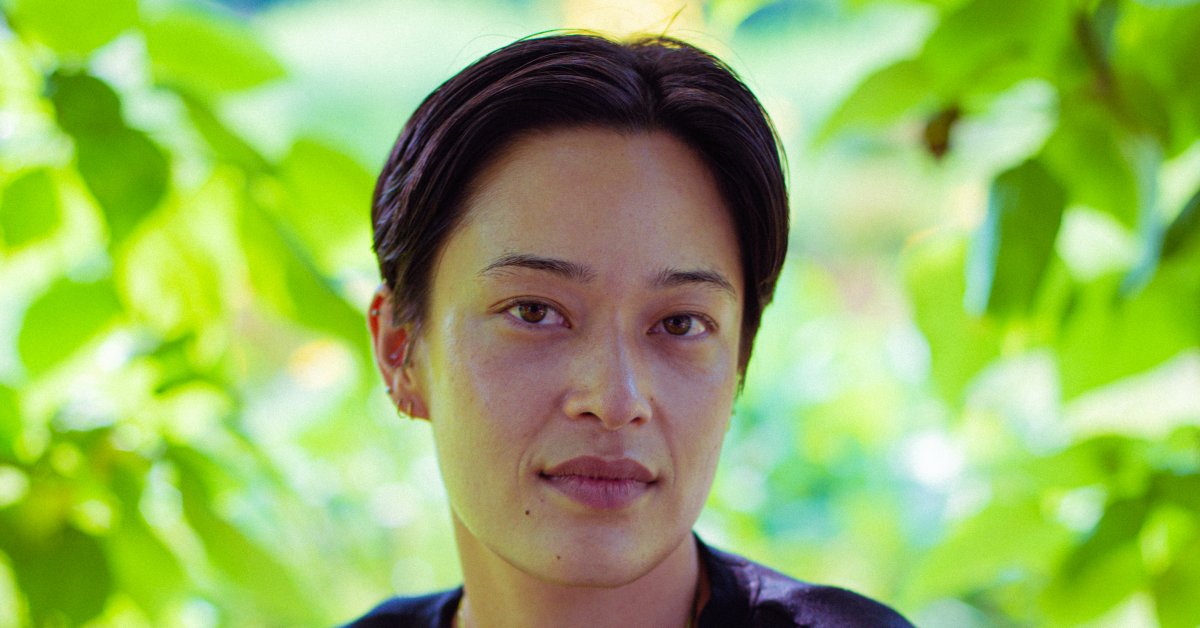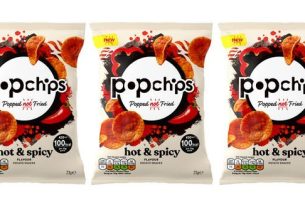Lately I have been fixated on a butterflyfish. This specific butterflyfish lived sometime in the 1970s just south of Lizard Island on the Great Barrier Reef. It swam in the company of two others: gold-striped butterflyfish whose shiny bodies looked like someone had placed a dime on a pat of butter. But it did not exactly resemble its two companions—the silver spot on its body seemed to blur into stripes. This butterflyfish, my butterflyfish, was half the size of the others but led the trio as they foraged on the reef. When other fish strayed close, my butterflyfish tilted its head toward the sand and prickled its spines. It was the most aggressive of the three toward others, the most on edge toward strangers.
The three fish swam like this for two hours, which we know because a marine biologist followed them. After two hours, the marine biologist photographed my butterflyfish and then shot it with a .303 powerhead. It was taken because it looked different, not like a known species but a blend between two different ones, like a hybrid.
I learned about my butterflyfish in a scientific paper from 1977, and I found myself wanting to know how it came to keep the company of two gold-striped butterflyfish, if they were related or simply happened upon one another on the reef. I wanted to know more about how it had lived its life.
It feels risky, even objectionable, to identify with a hybrid fish, considering how a century ago, I might have been considered a hybrid too, how recently Western science attempted to split human races into separate species, how miscegenation laws were only ruled unconstitutional in 1967, how many people on bleak corners of the internet might still leer at my birth.
“Hybrid” came into use around the year 1600, intended to describe the offspring of plants and animals of different species. But eventually its meaning would spill over (neutrally) to mixed-fuel cars and (offensively) to mixed-race people. The line between scientific jargon and slur has always been slippery.
Read More: On Being Black and Asian in America
The first time I saw someone describe mixed-race people as “hybrids” and “half-breeds” was in middle school on a Neopets chat board. The racism seemed so removed from the life I led in ostensibly liberal suburbs, and almost comical against the yolk-yellow backdrop of a virtual pets website made for children. I joked about it for weeks with my friend Saya, who is also half-Asian. But this is all to say that I was probably 12 when I first thought about myself as a hybrid, and perhaps the association never left.
The father of taxonomy—why must fields of science have fathers?—is Carl Linnaeus, who named more than twelve thousand species. He devised a binomial naming system, where each species on earth would have a name in two parts: first, the genus and, second, the species. Many of these species already had names, of course. The Native Hawaiians knew butterflyfish—they called them kīkākapu and lauhau—before Linnaeus named the genus Chaetodon. In Linnaeus’s system, organisms were named as they were “discovered,” meaning, largely, by white men.
When scientists described the hybrid butterflyfish, they did not give it a name. Hybrids do not have Linnaean names because they are not distinct species. Many hybrids are unable to bear fertile young, if they can reproduce at all. They are expected to die out. In Linnaean taxonomy, hybrids look like algebra—two species names adjoined with an x. A hybrid between a threadfin butterflyfish and a lined butterflyfish becomes C. auriga × C. lineolatus. These names define hybrids by their parentage, not their individual existences. There are charismatic exceptions, of course—ligers, narlugas, and pizzly bears. But butterflyfish hybrids are elusive and serendipitous, seemingly unlikely to become a species of their own or to replace the species they descend from, and so we do not give them permanent names. If they exist in perpetuity, it is in deference to their parent species, the only new space carved out for them marked briefly by the ×.
This × unites many of us hybrids regardless of our mixes. We have stood miserably through attempted genealogical dissections by a guy at a bar or a guy at work or a guy, any guy, really. We have seen the same blurred composite photo of a beige-passing woman that we were told was the mixed-race future of America and wondered why she looked so white. We have felt like a stranger in what we are told is a homeland. This × is intangible and, on its own, technically meaningless. But it is not meaningless to me. It is the only thing we know is wholly ours. We will never be caught between worlds, as long as we have ×; it is our world. When I read C. auriga × C. lineolatus, the first thing I see is the ×.
“What are you?” is an act of taxonomy, even if the asker does not realize it. It is the question the scientists asked of my hybrid butterflyfish. The question my SAT forms asked of me before I opened my test booklet to write an essay about whether people should accept unfairness as a condition of becoming an adult. The question strangers asked me in the malls of my childhood, peering over my bowl cut to see if a legible pair of parents might suddenly appear. I have lived my life dogged by The Question.
I am lucky that The Question is the most common vector of racism I encounter. It establishes me as something inscrutable—a strange amoeba in a petri dish, never seen before in this pond. In any other context, I would appreciate the reminder that I am an organism like any other, we people and pigeons and bacteria experiencing homeostasis on the sidewalk. But unlike real science, the driving question here is not in pursuit of knowledge, but objectification. The Question does not understand me as a person but as an object—not who I am but what.
As the years pass, I have become convinced that the people asking me The Question are looking not for an answer but for confirmation. I know this because when I do tell these people “what” I am, some of them argue with me. “You’re not Korean?” a Lyft driver asked me once, incredulous. “I could have sworn you were Korean. You sure you’re not Korean?” I develop a casual taxonomy of my own: what the race people mistake us for reveals what they want from us. If they say we are Korean, it means they find us beautiful. If they say we are Chinese, it means they want us to go back to where we came from. They never ask if we are Japanese, unless it is in a list given to us in some kind of tasting menu of East Asian ethnicities.
Read More: I’m Tired of Trying to Educate White People About Anti-Asian Racism
It is tempting to write against The Question, and advocate for a future in which mixed-race people are no longer intriguing ciphers to be unscrambled on the sidewalk, in which we can simply exist, unbothered. It would be even simpler to dismiss these questioners as random asshats who need to get a life and stop interfering with mine. But I can’t. Because whenever I meet a mixed person who looks something like me, I want to ask them The Question. I want to know what kind of Asian they are. I want to know how their parents met. I want to know what words they use to identify themselves. I want to know how close or distanced they feel to their own whiteness. I want to ask them the questions I don’t want strangers to ask me. In other words, I am also the asshat. I can never abandon The Question because I am endlessly curious about our shared hybridity. Maybe it’s because I grew up longing for role models, surrounded by dozens of white and Asian families like mine but no mixed-Asian adults. We were all children, a new and blurry generation, all of us ogling the oldest of us for some glimpse into our uncertain futures, some idea of who we might grow up to be.
For some time, whenever people asked me The Question, I ignored them, my pace quickening in a huff. I pretended not to hear. Maybe now I would answer, my steps slowing until I am planted on the sidewalk, my stance so wide that people must walk around me. “What are you?” they ask me. I look them in the eye and tell them: “×.”
Excerpted from HOW FAR THE LIGHT REACHES by Sabrina Imbler. Copyright © 2022. Available from Little, Brown and Company, an imprint of Hachette Book Group, Inc.
More Must-Reads From TIME



